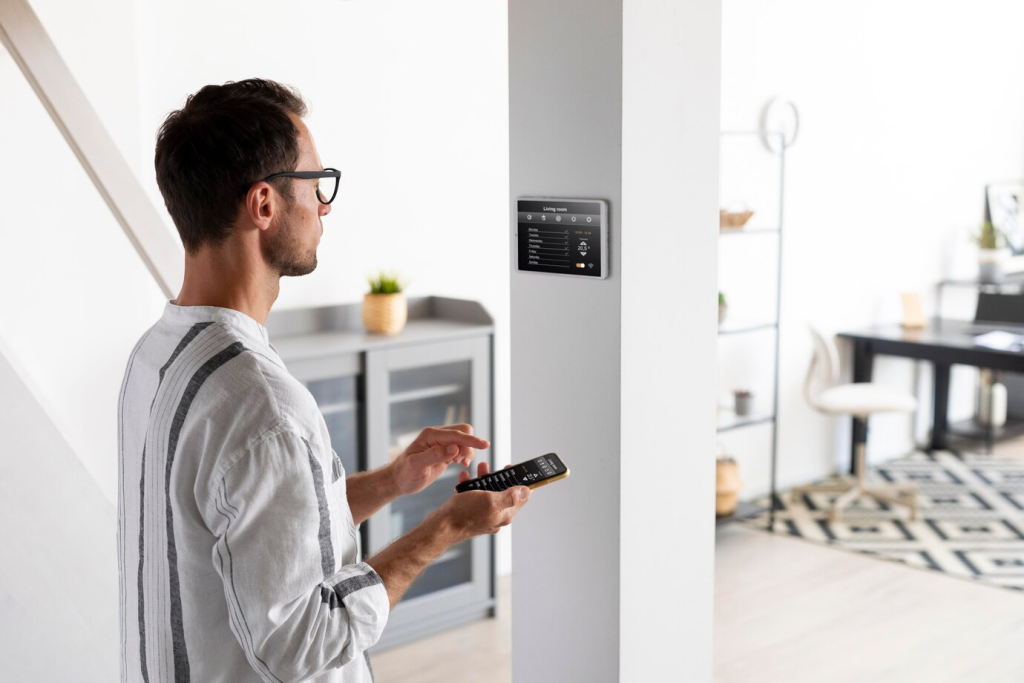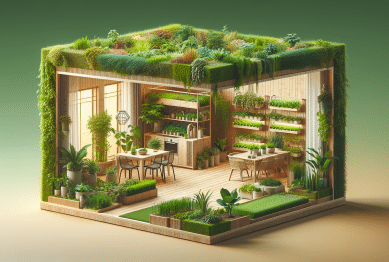Smart Homes Just Got Smarter
Here’s everything you need to know about home automation in 2025 — from emerging trends to essential gear and privacy considerations.
Home automation is no longer a futuristic fantasy — in 2025, it’s a daily reality for millions. From voice-controlled lighting to AI-managed energy systems, smart homes have evolved into intuitive, adaptive ecosystems that make living easier, safer, and more efficient.
But what’s really changed this year? And which technologies are worth your investment?

Key Home Automation Trends in 2025
🧠 1. AI-First Everything
AI isn’t just behind your voice assistant anymore — it’s running your entire home environment. Think:
- Predictive lighting and climate control
- AI that learns your routines and adjusts settings automatically
- Smart fridges that reorder groceries based on usage patterns
📈 According to Statista, over 62% of smart homes now use AI-driven systems to manage daily operations (Statista, 2025).
🔐 2. Security That Knows You
Home security has leveled up with:
- Biometric access control (facial, fingerprint recognition)
- AI-enabled surveillance that distinguishes between friends, pets, and intruders
- Integration with law enforcement alert systems
Apps now offer real-time AI analysis of movement and sound — making false alarms almost nonexistent.
♻️ 3. Sustainable Smart Living
Home automation is now a central tool for reducing energy waste and carbon footprints. Smart systems optimize:
- Heating/cooling based on weather and occupancy
- Water usage in irrigation and plumbing
- Power consumption by unplugging unused devices
Energy dashboards now provide real-time carbon footprint tracking, aligning with sustainability goals.
🗣️ 4. Voice + Gesture Control Integration
Hands full? No problem.
New systems combine voice commands with gesture recognition — turning on lights, adjusting thermostats, or answering the door with a wave or a glance.
This has become essential for elderly users and those with accessibility needs.
🧩 5. Seamless Interoperability
Thanks to the widespread adoption of Matter (the universal smart home standard), your devices now talk to each other — regardless of brand.
2025 homes are filled with devices from multiple manufacturers that work in harmony, from Philips Hue to Amazon Echo to Apple HomeKit.
What You’ll Need for a Smart Home in 2025
If you’re just getting started — or upgrading — these are the must-have systems:
🏠 Smart Hubs with AI Assistants
- Google Home Ultra and Amazon Echo Vision now include ambient AI, processing data locally for better privacy.
💡 Adaptive Lighting
- Systems like Nanoleaf Skylight adjust based on time, activity, and mood.
🌡️ Smart Climate Control
- Nest Gen 5 now uses machine learning to detect occupancy and forecast temperature needs.
🔐 Advanced Home Security
- Arlo Vision 360 uses panoramic video + AI person detection.
🧼 Automated Cleaning
- Robot vacuums and mops like Roborock S9 Max Ultra now map in 3D and self-empty.
How Much Does Home Automation Cost in 2025?
Costs vary, but here’s a rough breakdown:
- Basic smart home setup: $500–$1,500
- Mid-range AI-integrated system: $2,000–$4,000
- Full smart retrofit (energy, security, lighting): $5,000–$15,000
Pro tip: Many governments offer green energy rebates for smart energy devices. Check your local programs.
The Big Question: Is It Safe?
📵 Privacy and Data Security
Smart homes collect data — a lot of it. In 2025, top devices use on-device processing and encrypted cloud storage.
Look for:
- Devices with GDPR compliance
- Brands with transparent data policies
- Local AI (no cloud) options for high-security use
Brands like Apple, Eufy, and Home Assistant are leading in privacy-first automation.
Final Thoughts: Your Home, Your AI-Powered Haven
Home automation in 2025 isn’t just about gadgets — it’s about lifestyle. The tech is smarter, more sustainable, and more intuitive than ever before. Whether you’re aiming for convenience, savings, or security, your home can now anticipate and adapt to your needs in ways that were sci-fi just five years ago.
So plug in, level up, and enjoy a home that truly works for you — quietly, intelligently, and seamlessly.
References
- Statista (2025). Smart Home Usage and AI Integration Trends. Available at: https://www.statista.com/smart-home-ai-2025
- Wired (2024). Matter Standard Adoption and the Future of Interoperability. Available at: https://www.wired.com/story/matter-smart-home-compatibility
- Harvard Energy Lab (2024). Smart Homes and Energy Efficiency. Available at: https://www.energy.harvard.edu/smart-homes-carbon-tracking









